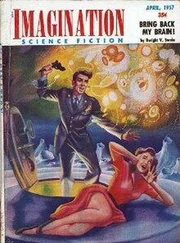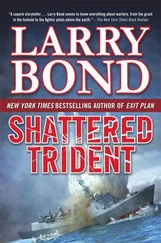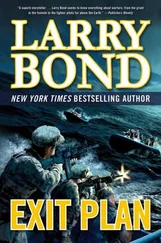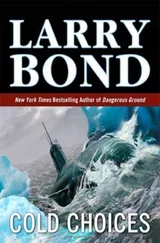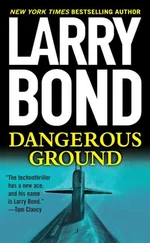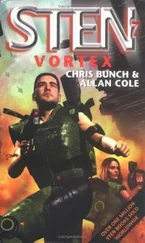Mechanics had worked all night under harsh floodlights, assembling and inspecting helicopters, repairing what was wrong, and scrounging for parts that were still “on the water. “
Many helicopters, having been declared unfixable in the short time allowed, had been “canned” or cannibalized, their functional parts removed and installed to make some other
aircraft flyable. A single helicopter could make three or more other aircraft functional by donating an engine to one, a part of the instrument panel to another, and so on. There would be time to restore the gutted hulk later.
The confusion at the airfield was only amplified when Marine helicopters, some of them also needing maintenance, arrived to reinforce the 101st’s machines. Marine pilots were quickly taken aside and in one-on-one briefings, taught Army procedures by their opposite numbers.
Even as the brigade’s transport and attack helicopters were frantically readied, the division, brigade, and battalion commanders quickly built the necessary elements into the attack plan. Even with a straightforward movement to objective and an assault, a hundred details, on which lives depended, had to be decided, checked, and then passed down the line.
Maj. Gen. Greg Garrick, the division commander, had finished the basic attack plan while riding in a helicopter from the Mount Whitney back to his base. The brigade commander, Col. Tom Stewart, had been waiting with the rest of the division staff. By midnight they had fleshed out
Garrick’s plan into a brigade assault, coordinating it with naval and
Marine air support, a logistics plan, communications and intelligence procedures, air defense plans, chemical warfare plans, down to the locations for helicopters to land once they had delivered their loads.
This detail-oriented procedure was complicated by a sketchy intelligence picture, and a changing list of the forces available. Halfway through the planning session, the maintenance officer came in with the news that enough helicopters were available to lift a fourth battalion. This was good news, but many plans had to be reworked.
The battalion commanders were summoned at midnight and in a two-hour brief, filled in on their roles in the operation. Planning had been so hurried that no name for the assault had been picked, and someone had suggested Next-Day Air. Garrick had finally agreed to Air Express.
The battalion commanders took their orders, expanded and implemented them for their own situations, and summoned the company commanders at three. The company commanders briefed their platoon leaders at four, and the squad leaders were finally given their orders at four-thirty.
At five the lead helicopters took off.
The noise and confusion inside the base drew the attention of the local citizenry, who stood outside the hastily erected fences and watched the lights and machinery and listened to the sounds of jet engines. The display of resources and technology was almost overwhelming, and frightening to many. What would these foreign conquerors want?
Standing near the flight line, General Garrick saw the spectators outside the fence, but was more worried about the security aspect than their impressions. His grandmother’s cat could have figured out by now that the division was making an assault. Their salvation lay in speed. By the time a Boer spy sent the news to his superiors and they analyzed the report, his men and machines would be over the objective. He hoped.
He watched, along with the spectators outside the fence, as the first rank of helicopters lifted off. The troop carriers, UH-60 Blackhawks and
CH-47 Chinooks, took off first. They were the slowest and would set the pace for the rest of the formation. In twos and threes they used the improvised runway to make rolling takeoffs, compensating for their heavy loads. As soon as one group had cleared the runway, another taxied on and repeated the maneuver.
The sound of hundreds of jet engines and rotor blades filled the air, and even with ear protectors, Garrick found it difficult to think. The citizens outside the fence could be seen backing up, trying to balance their curiosity against the blast of sound. A hot wind filled the air with dust, and the smell of burnt metal. By the time the force had lifted off, it would be ten degrees warmer in camp.
The last of the troop carriers had lifted off, and Garrick could now see the scouts and attack birds going. The sleek OH-58s contrasted sharply with the long, angular Apaches. The faster machines would quickly overtake the “sticks” and assume positions in the van and the flanks.
“It’s time, sir.” Garrick’s aide, a captain, escorted him over to the door of a waiting Blackhawk. The door gunners ignored him. Their faces hidden by helmets and visors, the two men seemed already intent on their task.
While Colonel Stewart ran the battle from his forward ground headquarters, Garrick intended to see the assault himself. As a division commander, he would normally have to coordinate the actions of three brigades, but with only one in the field, this was a rare opportunity to see the fight firsthand and at the same time stay out of Tom’s way. He had a radio link both to Stewart and the division staff, located nearby.
Belting himself in, he donned a headset, and even as he was checking the circuit, the command helicopter lifted off. More lightly loaded than its fellows, it would easily be able to follow the action.
Garrick moved forward, through the cabin, so that he could stand near the cockpit and look out the forward windscreen. Stretched out ahead of them like a cloud of insects was an entire brigade. Elite troops, they were moving at a hundred plus knots toward their objective.
They were headed west, away from the sun, but as they climbed, the morning light illuminated each aircraft enough to show its location. His command chopper continued to climb, and as he watched, the last stragglers assumed their positions.
The troop carriers, “slicks,” each with a squad of infantry aboard, flew in trail formations, strings of four machines separated by a hundred yards and staggered at different altitudes. The larger Chinooks carried heavier weapons and supplies. On either side, teams of scout and attack helicopters served as “pouncers,” ready to attack any ground-based threat that appeared. In front, a wedge of gunships, all fully armed, slowly pulled ahead. They would hit the area just before the slicks landed and provide support to the attacking troops.
Garrick knew that other aircraft ranged farther out. Marine AV-8Bs and
Air Force F-16s, now based at Durban, would hit the target while a solid cover of F-15s would cover the entire assault force from South African fighters.
Looking to the left, Garrick saw the mountain escarpment that marked the borders of Lesotho. The cliffs rose two miles above sea level on the side he faced. Below him was rugged, mountainous country. His admiration for the “straight-leg” infantry increased. If they were fighting their way through stuff like that, then this was the way to go to war.
The cool morning air minimized the chance of downdrafts, and the assault force carefully picked its way along a river valley that ran to the northwest. In about half an hour, they would turn right and head through a mountain pass, flowing down like water onto the city below.
LADY SMITH
Commandant Korster hugged the ground under the radar van and watched as another flight of needle-nosed fighters roared overhead. This wasn’t the first time that the Americans had hit the town, but they seemed very serious about it today. Could they know about the radar?
Korster was responsible for Ladysmith’s air defenses. Besides a battery of Cactus SAM launchers, he had some captured Russian antiaircraft guns and two batteries of South African twenty-and forty-millimeter guns.
Читать дальше


